Associative Typology deepens our knowledge about the psychological characteristics of personality in order to further our understanding in the spheres of Socionics, practical psychology and psychotherapy. It does this by offering a more profound comprehension of the inner nature of the individuals through the psychodynamics of music and colour. This article refers to the fundamental categories (such as dichotomy, functions, groups of psychological types and types of psychic energy (“TPE”) which provide the basis for Associative Typology. As a practical application for associative theory in its current stage of development, the basic descriptions for four groups of psychological types are presented to the readers (typology according to the type of psychic energy) and corresponding descriptions for types of musical compositions (musical typology) on the basis of it being more efficient to resolve any issues of general psycho-diagnostics for the client and to find the best approach to rendering psychotherapeutic assistance.
Key words: psychology of the personality; psychotherapy, psycho-diagnostics, association, typology, Socionics, psychic energy, music, colour.
Introduction
Typology in Associative Socionics originates in the psychoanalytical conception of personality structure by S. Freud, analytical psychology by C. Jung and the typology of the informational metabolism of A. Augustinavichute The article on the ‘Butterfly’ associative model by O. Tangemann forms the basis of Associative Typology, which contains theoretical grounds and references to the studies of psychoanalysts and other authors whose concepts are reflected in the theory of Associative Socionics. Tangemann correlates the types of psychic energy with the components of personality structure which were described for the first time by S. Freud in his studies (Ego, Id and Super-ego) 1. Similar terminology was used by the founder of Socionics, A. Augustinavichute, when marking up the model blocks of informational metabolism – Model ‘A’. The names of three blocks in Model ‘A’ correspond to the components in Freud’s personality structure. For the fourth block, Augustinavichute selected the name ‘Super-id’, which correlates in meaning with the Jungian concept of the collective unconscious. More detailed information about Model ‘A’ can be found in Augustinavichute’s book ‘Socion’ (2008) 2.
In creating the Associative model, O. Tangemann borrowed the block names that were used in Model ‘A’ for the four types of psychic energy, using them for the blocks of her ‘Butterfly’ model. Information on types of psychic energy (TPE) was taken from the theory of Socionics, partially corresponding in meaning to the Freudian components of personality structure. Three TPE (Ego, Id, and Superego) correspond by their meanings to the components of the personality structure by S. Freud. The fourth TPE is related by its meaning with the “Shadow” archetype by C. Jung 1. Four groups of psychic types that appear to be the carriers and exponents of the four TPE have been named correspondingly as Ego-types, Id-types, Superego-types and Superid-types. In the model picture, each of the wings of the butterfly is related to one of four blocks. Which block corresponds to which wing will be made clearer in this article.
1. The associative model “Butterfly”
In Socionics, the TPE groups are formed through the interchange of three basic dichotomies: extraversion-introversion, rationality-irrationality, and statics-dynamics.
S – sensing, L- logical (thinking), I – intuitive, E – ethical (feeling), I- introvert, E-extravert.
Id-types – are the irrational, static extraverts such as Aldous Huxley (IEE/ENFP), Don Quixote (ILE/ENTP), Napoleon I (SEE/ESFP) and Georgy Zhukov (SLE/ESTP).
Superid-types – are the irrational, dynamic introverts such as Sergei Yesenin (IEI/INFP), Honoré de Balzac (ILI/INTP), Alexandre Dumas (SEI/ISFP) and Jean Gabin (SLI/ISTP).
Ego-types– are the rational dynamic extroverts such as Hamlet (EIE/ENFJ), Victor Hugo (ESE/ESFJ), Jack London (LIE/ENTJ) and Stierlitz (LSE/ESTJ).
Superego-types – are the rational, static introverts such as Fyodor Dostoyevsky (EII/INFJ), Theodore Dreiser (ESI/ISFJ), Maximilien Robespierre (LII/INTJ), Maxim Gorky (LSI/ISTJ).
On the functional level, these four TPE-groups of types correlate to the four pairs of functions which bear the same characteristics because they are situated in the interchange of the same dichotomies (extraversion-introversion, rationality-irrationality, and statics-dynamics). Pairs of functions are correlated with the groups of types in the following way:
For Superego-types – these are the functions of introverted logic and ethics.
Ti – the logic of relativity between phenomena, referring to rules and principles, order and structure, adherence to legality, legal judgement, categorical thinking, scientific theories, reasoning. Fi – ethics of relationships, feelings towards others, ethics, an attention to social norms, identifying friends and enemies, morality, moral judgement, attention to the needs of others, empathising with people, taking umbrage.
For Superid-types – these are the functions of introverted intuition and sensation.
Ni– intuition of vague premonition, foresight and hindsight, doubt and vivid imagination; indecisiveness (“To be or not to be – that is the question”); self-absorption, mental wanderings, detachment from reality; attention is directed to the changes and progression of events over time, memories of the past and future, illusions. Si – relaxation and bodily sensations (comfort, smell, taste, sight, colour), assessing one’s level of comfort and those of others, maintaining a cosy environment; paying acute attention to sensory changes and the needs of the body; an attention to attractiveness and aesthetic appearance; the perception of surfaces through touch; interest in health issues and cooking; the ability to put others at ease, focusing on sensual sexuality and pleasant appearance.
For Id-types – these are the functions of extraverted intuition and sensation.
Ne – intuition of insight and discovery; ability to grasp the essence of phenomena (to trim the sails to the wind); inspiration of ideas, open mind and originality of thought, (ambition to be a genius or at least to make a discovery), pursuit of novelty, multiple interests, hobbies, interests, sharing of thoughts and perspectives; ability to see the alternatives, the hidden potential of things. Se – volitional sensation, sensation of will power, space and territory; the strength of personality, sense of achievement and reality; wishes and desires, freedom of action, impulse to liberation, expansion in space, a sense of ownership, material possessions, valuables, seizing control of the environment, assessing and dealing with threats, success, physical impact, assertiveness, the ability to dominate, focusing on lustful sexuality and powerful appearance.
For Ego-types – these are the functions of extraverted logics and ethics.
Te – the logics of absoluteness and evidence of the phenomena; practical or business logic, pragmatism and common sense, feasibility and effectiveness of actions, goal-setting and instructions, methods and experiments, productivity, technology, organisation, persuasion with factual information, scientific practices, system approach, mechanical work and machinery, reliance on facts, statistics and working experience rather than theory. Fe – ethics of emotions, recognising and utilising expression of emotions (joy, sadness, anger, anxiety, agitation, excitement, panic etc.), power of emotions, emotional pressure, recognising emotional reactions, persuasion through emotional expression , inspiring passion in others and manipulation of their emotions (especially in groups), artistry and drama, impression.
This way, along with the 16 types of informational metabolism, there appears to be a general division into four groups of TPE. Each group of TPE includes 4 psychological types (see above). This division existed in the theory of Socionics before the Associative theory and method of typing appeared; so what is so special about this new approach to the definition of the personality type?
In the theory of Associative Socionics, types of psychic energy (TPE) are correlated with the pairs of Socionics functions, the classic temperaments of Hippocrates, the colour of chakras or the rainbow and certain characteristics of musical compositions. Correlating the peculiarities of the psyche with the colour and music aims to expose the deep essence of interconnections between human beings and nature’s phenomena, universal creation and total harmony. Such attempts have been made earlier by other theorists and practitioners. The M. Lüscher colour test had gained worldwide popularity 3. Russian specialists in musical psychology may know the studies of V. Petrushin 4. In Socionics, there were also attempts to correlate the colours with the Socionicfunctions, in particular, one of the articles by V. Gulenko 5.
According to O. Tangemann, developments in the sphere of Associative Socionics allow us to re-think and re-acknowledge deep connections between the person’s psyche , music and colour. By emphasising the four TPEs and empirical studies on the musical preferences of people with these different personality types, it became possible to create an Associative typology that correlates characteristics of personality types with colour and musical preferences. Moreover, Associative theory allowed looking into the individual’s psychodynamics that were previously hidden from view.
The Associative method of typing makes it obvious that the distribution of psychic energy in the structure of the psyche determines the character of its psychodynamics (i.e. its pattern, harmony and imbalance), which is called the ‘TPE profile’ or ‘TPE dynamics’. The concept of TPE in Socionics opens up possibilities for applying the Associative method of typing to practical psychology, psychotherapy and alternative therapy.
By studying Associative typology, one can determine one’s leading and complementary TPEs as independent to oneself 6. Please note that when using the descriptions given in this article, the reader should not be able to determine his/her personality type (one of the 16 types of the Socionics typology). Instead, by determining one’s strongest TPE, the issue of determining one’s personality type should become much easier. After all, it is easier to determine a type among 4 rather than among 16 types.
As far as there are only 4 groups of TPE, by acknowledging its descriptions from this article, it should not be difficult to determine at very least the strongest and the weakest TPEs. An obvious lack of one of the TPEs in the psyche of the individual is reflected in the person’s dependence on the environment, unsatisfied needs and reliance from external aid in order to restore emotional and psychological balance. Today, Associative approach is inseparable from Socionics. There is a connection in theory and practice between the Associative “Butterfly” model and Model A. This means that definition of the type of psychic energy (TPE) facilitates the definition of the personality type and vice versa. To find out about how the types of psychic energy are correlated with the temperaments, energy system of chakras and forms of consciousness, see the article by O. Tangemann, “The Associative Model Butterfly” (2008) 1.
Research in the sphere of Associative Socionics is still in development. This article does not aim to cover the whole scope of works or to demonstrate the depth of comparative analysis for musical and colour preferences of people with different personality types. Nevertheless, the author has found it possible to present some of the developments in the sphere of Associative Socionics – a description of Associative and musical typology: the psychological peculiarities of four TPE – description of musical qualities typical for these groups.
Associative Typology – typology according to the types of psychic energy (TPE)
Id-types are the people who occupy themselves with whatever is interesting and pleasurable to them. Their desires are variable, changeable, and adaptable to the current circumstances. As a rule, they have a wide range of interests, plenty of acquaintances and there are many places which they have visited already or are planning to visit. Their main merit is that they can relatively quickly and without much effort get adapted to the new situation and switch from one activity to another if that is necessary. They are oriented to the external world and the things happening around them. As far as the world is full of various pleasures and wonderful events, their interest in life and willingness to enjoy new experiences remains much stronger than melancholy and short failures. Their tears dry out quickly and there is a radiant smile on their faces again, with eyes wide open, expressing the surprise and genuine interest in everything new and uncovered. Id-types are childishly open, optimistic and cheerful, they love life and they know how to enjoy it better than any other type of people. They tend to put their own interests first, leaving interests and desires of others second. This is a reason why they might have some conflicts with others from time to time.
Id-types carry within them a creative drive, generously sharing their interests and cheerfulness with others and being a source of inspiration for those who do not possess the power of optimism and zest for life. Id-types are the bright exponents of the psychic energy ‘Id’ which, according to the Associative theory, correlates with yellow and green colours. Each mentioned colour endows the carrier of this type of energy with special characteristics.
Yellow colour – symbolises changeability, flexibility and emancipation of the human nature. Yellow characterises a person as self-sufficient, freedom-loving and cheerful. This colour is associated with laid-back behaviour, ease of communication and the free flow of its influence on external activities, like the sun spreading its light all over and sharing its warmth with all living creatures. Green colour – is the symbol of eternity, inexhaustible vivacity, and one’s potential whether apparent or hidden. This colour freshens up, calms, and inspires hope for future and the strengths to overcome obstacles. Those who choose the green colour are characterized by self-control and persistence in achieving their goals. Such people meet the challenge of failure, and can find the way out from any difficult situation, staying resilient even in the face of the danger.
Representatives: Elvis Presley,Britney Spears, Jonathan Ross, Rihanna, Pink, Susan Boyle, Rushdi Salman, Lui de Fuines etc.
Superego-types are the opposite of the life-loving and enthusiastic Id-types. Rather than thinking about themselves and their own desires, these people worry about how to satisfy the requirements and needs of others, how to improve their way of life and first of all, the lives of their loved ones. Superego-types are law-abiding, honest and responsible. They tend to fulfil the assigned work as high as diligently as possible so that they do not feel shameful in front of the others. When tackling an assignment, they go the extra mile to make sure their result is perfect. The quality of their work is their source of personal pride and critical self-esteem.
As a rule, they are quiet, reserved, hard-working people who know how to behave in any situation. There is obvious integrity in their views and consequence in their judgements and deeds. Superego-types are resistant to life’s hardships. They have a will power that allows them to overcome obstacles and they are oriented to authority, total respect and recognition rather than random chance or momentary pleasure. Superego-types assert high moral values, keeping up an established order that is important for social conservation. Superego-types are the bright representatives of the psychic energy ‘Superego’, which according to the associative theory can be correlated with all light colours in general and white, pink and violet colours in particular. Each mentioned colour endows the carrier of this type of energy with special characteristics.
White colour – symbolises the colour of verity, impeccability and excellence, attempting to make all that is implicit eventually explicit. This colour is associated with clarity, sincerity, purity of thought, wisdom and high morality.
Pink colour – is the colour of sympathy, tenderness and romantic love. Pink colour relaxes and calms, taking you to the world of sublime love, fairy tale and sweet dreams.
Violet colour – is the colour of spiritual contemplation, characterising a person as a philosopher and taking your thoughts to the highest levels of existential knowledge, opening up the mysteries of the universe. This colour is chosen by those who value intellectual and spiritual pursuits, who think about the ageless subjects of good and evil, justice, honesty, and the meaning of human life.
Representatives: Agnetha Faltskog, Clint Eastwood, Jerry Springer, Gwyneth Paltrow, Jodie Foster, Lionel Richi, Gotye etc.
Ego-types are true born leaders. They are hard-working, possess great will power and intend to change the order of the surrounding environment at their sole discretion. As a rule, they are somewhat presumptuous and would not like to admit their weakness in public. It is important for them to have a goal and to feel that they are ready to deal with any obstacles in order to achieve that goal. Ego-types are real fighters, tending not to adjust to any existing frames but still controlling the circumstances and intentions of other people and delegating the situation to the right people in order to achieve the goal with mutual efforts. Ego-types would successfully manage other people, make decisions, take responsibility and not give up on failures. Such people, as a rule, are good at projecting an aura of confidence and giving the impression of a serious, business person.
Ego-types are open minded in their judgement, assertive in their work and oriented to the final result. The weak point of such people is their obsession with emotions or goals and tasks which they have initially set for themselves. They feel the need to finish the task that they have undertaken and bring it to a finish even when the situation had changed and there is no point in pursuing the goal further. These people take responsibility more than any other types of people. In the case of a goal not being reached due to some objective reason which did not depend on them, they may take it as their personal failure. Ego-types do not like unexpected changes and they may find it difficult to promptly react to any changes in the environment, changes to plans and moreover to re-view long-term goals. Steady, predictable situations and order throughout their personal and social lives is more beneficial to them.
Ego-types are the bright exponents of the ‘Ego’ psychic energy which according to the associative theory, is correlated with red and orange colour. Each mentioned colour endows the carrier of this type of energy with special characteristics.
Red colour –is hot and energetic, traditionally being associated with masculinity, fire and blood. Energy of red colour brings physical strength, courage and confidence to the person. Undoubtedly, this is the colour of the winner! In order to win, a person needs an impulse to action, integrity of personality and a high level of attractiveness. Red colour is like a magnet, attracting the attention and not leaving you at ease, keeping you in permanent tension, exciting you and charming you.
Orange colour – like red colour, carries an energetic charge inside, exciting and warming you up, invigorating the senses. Unlike the red colour, the orange one is more flashy and cheerful, symbolising sexuality and orientation for success.
Representatives: Miley Cyrus, Maria Callas, Goya Toledo, Michael Stipe, Geoffrey Rush, Benazir Bhutto, Adele, Diana Ross, Chuckle Barry and etc.
Superid-types are strongly in contrast comparing to the Ego-types. Unlike Ego-types, they do not have a goal to impose their will to others. They do not tend to manage others and control the situation but at their best they are able to adjust themselves and bring subtle changes to the environment. Their influence on the circumstances and people around them is not obvious compared with the influence of Ego-types. Superid-types know how to create the relaxed atmosphere of nonintrusive communication, soft touch, humour and comfort. Superid-types find themselves often sinking into their inner world, which serves them as a source of inspiration and creation.
The inner world of such people is fragile and mobile. They subtly respond to the slightest changes in the surrounding environment. Knowing the sensibility of its nature, Superid-types spend a lot of time in loneliness, philosophising and thinking about themselves, their needs and trying to protect themselves from the destructive influence of the outside world. Unlike other types, this type of person can adapt to the adverse conditions of the surrounding environment, consuming the minimum of efforts to find a way out from the difficult situation with minimal losses. They possess the ability to keep their heads down in bad times and successfully live through the storm. Searching for the way out of a critical situation, they rely on their subjective perception which serves as a compass. Superid-types possess a sophisticated imagination, allowing them to imagine not only what really has happened but also what is going to happen and what is never going to happen. These people show a special interest towards animals and like to observe changes in nature. They are very perceptive!
Superid-types are the bright exponents of the ‘Superid’ psychic energy, which is, according to Associative theory, correlated with dark colours with black and blue in particular. Each mentioned colour endows the carrier of this type of energy with special characteristics.
Black colour – symbolises the mystery of the night and the imaginative, inner world of a person. Those who choose black colour carry a love for everything mysterious, unknown, and unclear, appearing mysterious to others.
Blue colour– brings in the condition of physical relaxation and emotional calmness and is associated with the freshness and coolness of water during a hot summer afternoon. Blue is associated with the endless blue sky and a feeling of detachment and spaciousness. The blue colour tones up, cools and calms the fiery emotions.
Representatives: Bjork, Amy Winehouse, Liev Shreiber, Simon Cowell, Dido, Duffy, Mylene Farmer, Mika, Lana Del Rey, Helen Mirren, Marilyn Monroe, Paul McCartney and etc.
Music typology of Associative Socionics
V. Petrushin, in his article ‘Psychological models of reflecting the reality in art’, described the model built on associations as the ‘Butterfly’ model 5. Petrushin’s models do not have a direct relationship to Socionics. Nevertheless, there is a clear connection on the level of theory between the Associative model and Petrushin’s models. Petrushin based his models on the theory of temperaments by H. Eysenck, archetypes by Jung and psychological definitions of colours by M. Lüscher. Tangemann also borrowed from the theory of classic temperaments, linking them with the Socionics functions, music and colours.
The main difference between Tangemann’s theoretical approach and the modelling approaches by Petrushin and Gulenko, as well as some other authors interested in similar issues, is concluded in the universalism, depth and fundamentality of the Associative model, which initially goes back to Freud’s psychoanalytical conception of the components of personality structure. Turning back to the basic ideas of the founders of psychotherapy, Freud and Jung, and analysing their concepts from the point of view of Socionics made it possible to rethink their theoretical heritage and to find a new perspective as the common ground that links and mutually fulfils their views on the nature of psyche. The new theoretical approach was described in the Associative ‘Butterfly’ model and the Associative typology method 1.
An interesting part of Associative theory is the interpretation by Petrushin relating to the connection between musical character and Eysenck’s temperaments, along with the Jungian archetypes. When comparing the perspectives described by Petrushin and Tangemann, you can draw a parallel with similar ideas. For example, TPE Ego resembles the Hero archetype, which is a choleric temperament correlating to quick minor music (Marché) in the model of Petrushin. TPE Id corresponds with the Child archetype, which is a sanguine temperament correlating to quick major music (dance). TPE Superego is correlated with the archetype Old Man, a phlegmatic temperament correlating to slow major music (pray). TPE Superid is associated with the Mother archetype, a melancholic temperament correlating to slow minor music (song).
While Petrushin uses examples of classical music, Tangemann uses examples taken from popular music of various styles and trends. The latest developments and discoveries in the Petrushin’s musical therapy and in Tangemann’s Associative theory open up new opportunities in musical psychotherapy for a more effective use of knowledge of psychological type and their typical preferences in colour and music. Associative typology may be used in Socionics and psychotherapy as an instrument of psychological speed-diagnosis of the personality. Using typology as an instrument of psychodiagnosis, it will not take long for the psychotherapist or socionist to determine the psychodynamics of a client.
Psychodynamics, from the perspective of Associative theory, means the TPE profile, which consists of the leading and compensating TPEs as well as the weakest TPE – the area of energetic insufficiency which could be related to emotional imbalance. The aim of the therapist is to understand the pattern of psychodynamics from the TPEs’ distribution in the psyche, to grasp how the energy imbalance may affect the psychological wellbeing of the individual and to help the individual recover and eventually to achieve his/her potential.
According to O. Tangemann, an individual feels more comfortable in one of two TPEs, which is typical for him/ her. This is expressed in the ability to easily switch between the different emotional states that are appropriate for him/her. Half the battle for a diagnostician is in the ability to correctly determine the opposition of TPE in order to help the client effectively understand his/her psychological type and sub-type. It is important that the professionals in practical psychology and psychotherapy realise the advantage and value of Associative psychodiagnostics in order to increase therapeutic effectiveness and to search and develop new and more differentiated approaches in work with clients. According to Petrushin, “Modern musical psychotherapy’ (MP) cannot ignore the developments and methods of work with a client which are conducted or have been conducted in other psychotherapeutic approaches. The creative use of methods and other psychotherapeutic approaches can only enrich MP with new ideas” 8.
Music brings a miraculous influence to the psyche of an individual. By listening to one’s favourite music, an individual is able to adjust one’s inner world in unison with the music. Sounds are reflected in the soul of a person on the level of sensual empathy, developing the musical imagination. The energising of chakras causes work to be more consistent. Melody flows down the body like energy purifying the soul, cleansing our emotional body from impurities and unlocking the mental twists and blockages which obstruct the regular functioning of psyche. That is why it is so important to be friendly to music, searching and finding your own music and listening to it every day on the way to work, returning from work, doing the housing work. Music is the unique remedy for psychic self-regulation, supporting the psyche on the balanced and harmonised levels.
The study of Associative theory and practice, aimed at enhancing the instrument of Associative psychodiagnostics, continues to develop, whereas music is one of the most important criteria of determining the psychological type of the individual and its emotional dynamic.
Brief description of TPEs in music
TPE Ego in music corresponds to a strong, targeted and controlled energy flow, which is correlated with the characteristics of extraversion, rationality and dynamics. TPE Id in music corresponds to a strong, uncontrolled and multidirectional energy flow, which is correlated with the characteristics of extraversion, irrationality and statics. TPE Superego in music corresponds to a weak, targeted, controlled energy flow, which is correlated with the characteristics of introversion, rationality and statics. TPE Superid in music corresponds to a weak, untargeted and uncontrolled energy flow, which is correlated with the characteristics of introversion, irrationality and dynamics.
Ego-music
Internal tension of rational extraverts or Ego-types goes into external tension. In music this is expressed by intense emotional energy release, a bright dynamic and sharp drops in the rhythm and contrasts of volume. Such music energises, brings you cheerfulness and gives you an impulse to action. The essence of this energy type is to actively influence the surrounding reality and to subordinate the circumstances to its will. The theme of musical compositions reflects the dominating role of Ego in the psyche of the individual, in his/her determining will and ability to withstand the external circumstances, whether they are natural disasters or another’s will. Musical images of Ego music inspire a will to confrontation, to challenge yourself, and confidence in yourself and in the likelihood of victory. Strong emotions activate the physiological processes and boost the adrenaline. That is why builders and people engaged with active work for a long time need this type of music as a natural stimulator to keep up their active tonus on an adequate level.
Ego music has a clear specified rhythm, which is supported by the energy of extraverted business logic (BL). In order to have the influence on people’s emotions there is a need for an uninterruptable stream of energy, which would remind one of a strong fountain or water stream. However, the psyche, which has been under constant pressure, cannot stand long against such power, which decreases the effectiveness of the pressure itself. That is why the periods of emotional eruptions interchange with periods of complete calmness and detachment from the object of pressure. The technique of the abrupt transition from the calm rhythm to the bursting escalation of sound is the best way to characterise the dynamics in music.
Representatives: The Phantom of the Opera”, “Notre Dame de Paris – Belle”, Antonio Vivaldi (“Storm”, “Opus 9 Concerto11”);Vanessa Mae (“Art of War “); Dmitri Hvorostovski ( «Se il cor guerriero”, A.Vivaldi»), Rolando Villazón (“La Danza”), Mirey Matie («Pardone moi», «Une Femme amoureuse»), Freddie Mercury(“The Show Must Go On”, “We Will Rock You”); Nickelback («Someday», «Rockstar»); Alexandra Burke (“Hallelujah”, “Bad Boys”); Beyoncé (“Halo”, “Listen”), Shakira (“Whenever, Wherever “,”Objection”), Mariah Carey (“ My All”, “Without You”), Tina Turner (“Simply The Best”, “River Deep Mountain High” ); Miley Cyrus (“Fly On The Wall”, “Hana Montana song -Ice cream Freez”); Gloria Gaynor (“I will survive”, “I am What I am”); Cher (“Strong Enough”, “Heart of stone”) .
Superego-music
Unlike Ego-music, Superego-music does not carry energy charge of the same strength and does not have bright and abrupt contrasts, which lead to an absence of the dynamic. Rationality as a predictability of rhythm and introversion as a weakness in power of the sound make an impression of consistency with regular repetition of musical pattern, which is correlated with statics in music.
Superego-music mostly can be likened to church music. This is calm, serious music where a person can open one’s soul, consult personal values and express one’s deepest beliefs, on the basis of which the person is building his/her life, and keeping as the main motives of his/her actions. Superego music is able to distract the individual from his/her personal problems and draw the attention to universal needs and moral values. There is no intention to impose one’s will, by all means, when struggling with the external obstacles. This music does not normally contain any of the tension or dynamics seen with Ego music, equally having no reach for endless pleasures or joyful/childishly careless states seen with Id music and having no intention to go deeper into the fantasised world and illusions of Superid music. Superego music, while peaceful and spiritual by its content, influences you to think thoroughly on your deeds, re-value your motives, and apply it with the eternal values of love and kindness in the relationship between people and in relation to some higher paradigm (God), whether it is an ideology or religion or sense of justice and order.
The issue of overcoming hardships also characterises Superego music in a similar way to Ego music, however there is no struggle with external circumstances, but a silent persistence, where righteousness and habitual routine work are valued. This righteousness concerns adherence to moral and intellectual values. Superego music looks into the themes of universal values without external and internal pressure. Music is intended to strengthen the spirit of the individual, developing the sense of self-sacrifice and subordination the highest principles and values. The feeling of universal harmony can be achieved via the everyday spiritual and physical work oriented for the progress of humanity.
Representatives: F. Schubert (“Serenade”, “Ave Maria”); Verdi(nabucco); Cliff Richard (“Millenium Prayer”, “Mistletoe and Wine”); Nil Diamond («Song Song Blue», «Hello Again»); Backstreet Boys ( «I Want It That Way», «As Long As You Love Me»); Boyzone (“No Matter What”, “Father And Son”); Demis Roussos («Because», « My Reason»); Nana Mouskouri (“Amazing grace”, “ Weiße Rosen aus Athen”); The Kelly family (“Santa Maria”).
Id-music
Irrational Id-energy is expressed in the ability to enjoy almost everything that is surrounding us. All the objects, one way or another, are able to be a source of pleasure. This particular sense was enclosed by Freud into the definition of sexual energy i.e. libido. A description of TPE Id as a component of the Freudian personality structure reflects the characteristics of Id-music the best: “Id represents the instinctual part of personality, which is responsible for satisfying the physical needs of the body, such as saturating the body with food, need in warmth and satisfying sexual desires. Id is managed by the principle of pleasure and its only aim is to achieve a momentary satisfaction. In this part of personality is always a chaos of passion: no logical thinking or comprehension of the time flow. Impulses release great energy resources, which supply energy to the whole structure of personality. Freud was comparing Id with a spoiled, egoistic child, demanding the satisfaction of its desires straight away 1.
Each personality type possesses a so-called sensor space, where we absorb subjects in a way similar to a funnel. At the same time, the subjects surround us in space and absorb us. Id energy is oriented to expand the limits of its space. Thus, there is sort of a game of endless interaction between the spaces. Permanent movement in the space causes an endless chain of pleasures in which you might be dissolved. The race for pleasure can be unreasonable, uncontrolled and dangerous for the carrier of such energy as well for those who are surrounding him/her. Certain instincts preserve the organism from similar dangers. For example, animals do not kill prey if they do not feel hungry, but play with it.
Life suggests endless opportunities for active interaction with the subjects of the surrounding space from the perspective of games and pleasure and this is reflected in the character of Id-music. Such music has strength in its performance (extroversion) and it does not carry an internal tension of struggle and opposition. The aim of this music is to charge with energy and cheerfulness, to create a mood of uncompromising joy and inspire confidence in the future. The music charges with optimism, releasing us from obsessive thoughts and anxiety and giving us an opportunity to get distracted from our problems by enjoying life as it is here and now. This ability to see the positives in everything and react to the life with bright, joyful emotions is the main mission of Id music. As a rule, unlike the Ego music, Id music does not require the concentration of attention or accumulation of energy in order to overcome any external obstacles. Life difficulties are approached from the perspective of fun, games or competitions.
Representatives: Mozart ( “Eine kleine Nachtmusik” Allegro, “Rondo Alla Turca), Kaoma (“ Lambada”), King Africa (“La Bomba “), Elvis Presley (“Jailhouse Rock”, “All Shook Up”); The Veronicas (“Untouched”, “4Ever”); A??A (“Honey Honey”, “Does Your Mother Know”); Britney Spears (Circus, Toxic); Lady Gaga (“Bad romance”, “Just dance”); Beatles (“Twist & Shout”, “She loves You”); Madonna (“Hung Up”, “Give It to Me”), Erasure (“Sometimes”, “Always”), Red Hot Chili Peppers ( Dani California).
Superid-music
Superid energy is touched with melancholy, a feeling of burden, presence of sadness and despair. It compensates and fulfils the energy of Ego, strengthening the contrast of the latter. In comparison with Ego music, Superid music possesses a weaker energy (introversion) and deep absorption into the internal world i.e. the world of subjective imagination and perceptions. It also contains more flexibility in its varied and complex patterns. Superid music can possess unusually lingering melodies because of its irrationality or, vice versa, can be characterised by a “lack” of melody and abrupt changes of rhythm. The power of emotions will not be obvious and bright. Superid is an introverted type of energy.
Superid energy is not manifested through active interactions with the surrounding reality, but is instead found by refusing to struggle and simply accepting the circumstances for the way they are. There is no intention to impose your will on others or to oppose yourself onto society. On the contrary, the ability to adapt to the external conditions is valued, as well as the intention to fit with harmony into the process of endless changes. The music reflects the state of mind and emotions of an observer who is tuned into the subtle details of the outside world. Sometimes we find a celestial comfort and, at other times, an exaggerated discomfort of sound in Superid music.
Speed and contrast of music patterns correspond to its internal tension, anxiety and melancholy which are perceived as characteristic for introverted dynamics in music: the general background of slow, quiet and introverted melody is combined with the delayed tempo (remission) and then reverses into an abrupt speed and change of the rhythm.
Representatives: Ludwig Beethoven («Moonlight Sonata», “ Symphony No.3 E-flat major, Op.55 “Eroica”); Claude Debussy (“ La Mer – Second Movement”),Amadeus Mozart(«Recviem»), Placebo (“Twenty Years”, “Sleeping with ghosts”); Pink Floyd (“Comfortably Numb”, “Hey You”); Within Temptation (“Memories”, “Stand My Ground”); Dido (« Thank You», «Life For Rent»), The Corrs («Dreams», «What Can I Do»), The Cranberries (“Dreams”, “Just my imagination”),Coldplay (“Yellow”, “Clocks”), The Verve (“Bittersweet Symphony”, Yellow), Oasis (“I’m Outta Time”, “Wonderwall”); Bjork (“All is full of love”, “Army Of Me”); Marilyn Manson (“If I Was Your Vampire”, “The Nobodies”); Muse (“Hysteria”, “Conscience”); Lacrimosa («Lacrima Mosa», «Crucifixio»); Massive Attack (“ Future Proof”, “Inertia Creeps”).
In conclusion, I would like to add that the Associative typology aims to deepen knowledge about personality differences not only on the level of 4 types of psychic energy (TPEs) but also studies musical and artistic preferences of different types related to the psychological functions such as intuition, logic, ethics and sensation. In this article, I explained the very basic level of differentiation between the 16 personality types according to their differences by type of psychic energy.
References:
1. Tangemann O.B. Associative model Butterfly – Socionics, Mentlogy and Personality Psychology”, 2010, ? 4, p. 65 – 70; ? 5, p. 77 – 82. 2. Augustivinchute A. Socion. M.: “Black Squirrel” – 2008 3. Dragoonsky V. Color personality test. AM AST, MHC. Harvest – 2005 4. Gulenko V.V, Expressive possibilities of mental states. The man and the world in universal language. – 1995 – http://socionics.kiev.ua/articles 5. Petrushin V.I. Psychological Models reflecting the reality in art-2008, N4, http://www.health-music-psy.ru/ 6. Tangemann O.B. Test to determine the type of psychic energy. 2010 http://aeterna.ru/test.php?link=tests:103659 7. Film Actors http://www.rusactors.ru 8. Petrushin V.I. Music therapy – the connection with the major psychological schools and trends – 2010, N1, http://www.health-music-psy.ru/
Olga Tangemann 2010 © Associative Socionics
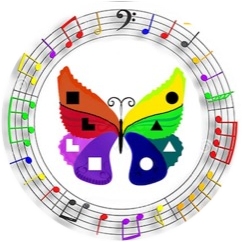



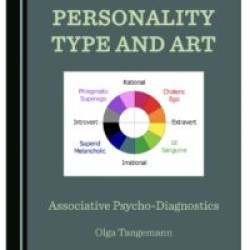
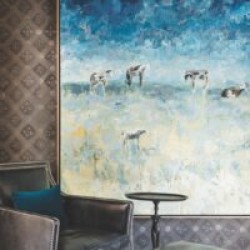

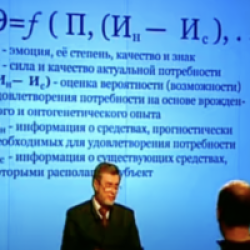
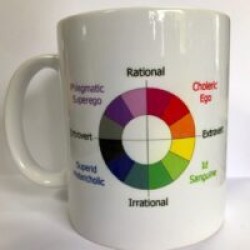

9 Responses
[…] […]
[…] всего познакомьтесь со статьей Ассоциативная типология. На форуме ШАС в разделе Музыка 16-ти типов есть […]
… [Trackback]
[…] Read More: socionics4you.com/post-428 […]
hanry
dfdfgew
… [Trackback]
[…] Read More on that Topic: socionics4you.com/post-428 […]
… [Trackback]
[…] Read More here on that Topic: socionics4you.com/post-428 […]
… [Trackback]
[…] There you will find 33572 more Info to that Topic: socionics4you.com/post-428 […]
… [Trackback]
[…] Here you will find 57542 additional Info on that Topic: socionics4you.com/post-428 […]
… [Trackback]
[…] Find More to that Topic: socionics4you.com/post-428 […]